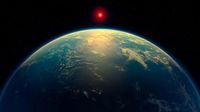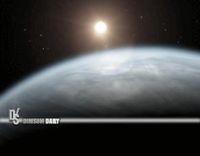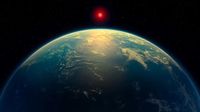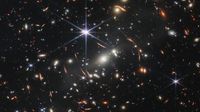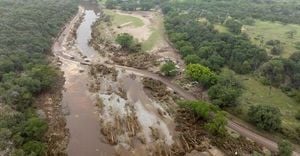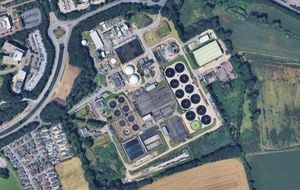In a groundbreaking discovery, scientists have detected potential signs of life on the exoplanet K2-18b, located 124 light-years away in the constellation Leo. Using the James Webb Space Telescope (JWST), researchers from the University of Cambridge identified chemical signatures in the planet's atmosphere that suggest the presence of dimethyl sulfide (DMS) and possibly dimethyl disulfide (DMDS), both of which are associated with biological activity on Earth.
K2-18b, classified as a super-Earth or sub-Neptune, is about 8.6 times more massive and 2.6 times larger than Earth. It orbits within the habitable zone of its host star, a red dwarf, where conditions may be suitable for liquid water to exist. The detection of DMS and DMDS marks a significant advancement in the search for extraterrestrial life, as these molecules are primarily produced by marine microorganisms like phytoplankton on our planet.
The findings were first announced on April 16, 2025, by The New York Times and were subsequently published in the peer-reviewed journal The Astrophysical Journal Letters on April 17, 2025. These observations represent the second detection of such chemicals on K2-18b, following a tentative identification made in September 2023, which had sparked considerable debate within the scientific community.
Professor Nikku Madhusudhan, the lead author of the study, expressed optimism about the results, stating, "Given everything we know about this planet, a Hycean world with an ocean that is teeming with life is the scenario that best fits the data we have." This statement underscores the potential for K2-18b to be a Hycean world—a planet covered by a global ocean beneath a hydrogen-rich atmosphere.
In the latest observations, the team utilized JWST's Mid-Infrared Instrument (MIRI) to detect the DMS and DMDS signals, which appeared stronger and more definitive than previous findings. Madhusudhan noted, "This is an independent line of evidence, using a different instrument than we did before and a different wavelength range of light, where there is no overlap with the previous observations. The signal came through strong and clear."
The concentration of DMS on K2-18b is estimated to be around 10 parts per million, significantly higher than the less than one part per billion found on Earth. This notable difference raises intriguing questions about the planet's atmospheric chemistry and the potential for life.
However, while the findings are compelling, scientists remain cautious. Other experts in the field have voiced skepticism regarding the implications of the data. For instance, planetary scientist Sarah Hörst remarked, "The smaller the molecule(s), the more likely they can also be produced by abiotic processes. One molecule, if it can be produced by any abiotic process, will never be enough to definitively claim detection of life."
Additionally, the results have not yet met the rigorous standards needed to confirm a scientific discovery. The observations have reached a statistical significance level of three sigma, indicating a 0.3% probability that the detections occurred by chance. To be considered a definitive scientific finding, a five-sigma threshold must be achieved, which corresponds to a probability of less than 0.00006% that the results are coincidental.
Co-author Måns Holmberg from the Space Telescope Science Institute emphasized the importance of further observations, stating, "It was an incredible realization seeing the results emerge and remain consistent throughout the extensive independent analyses and robustness tests." The team believes that an additional 16 to 24 hours of follow-up observations using JWST could provide the necessary data to reach the five-sigma threshold.
Despite the excitement surrounding the discovery, skepticism persists regarding the nature of K2-18b itself. Some researchers propose that the planet may not be habitable at all, with Nicolas Wogan from NASA's Ames Research Center suggesting it could be a mini gas giant lacking a solid surface. This perspective aligns with ongoing debates about the classification of K2-18b, as some studies argue it may not possess the conditions conducive to life as we know it.
Furthermore, while the presence of DMS and DMDS is intriguing, it does not guarantee biological processes are at play. Both compounds can also form through non-biological means, such as volcanic activity or chemical reactions in the atmosphere. As Madhusudhan himself stated, "It’s important that we’re deeply skeptical of our own results, because it’s only by testing and testing again that we will be able to reach the point where we’re confident in them. That’s how science has to work."
The implications of these findings extend beyond K2-18b, as they contribute to a growing body of research exploring the potential for life on exoplanets. The discovery of biosignature gases like DMS and DMDS in the atmospheres of distant worlds could pave the way for future investigations and enhance our understanding of the universe.
As researchers continue to analyze the data and conduct further observations, the scientific community remains hopeful yet cautious. The quest for life beyond Earth is far from over, and K2-18b stands as a tantalizing candidate in this ongoing exploration of the cosmos.
